Publications
-
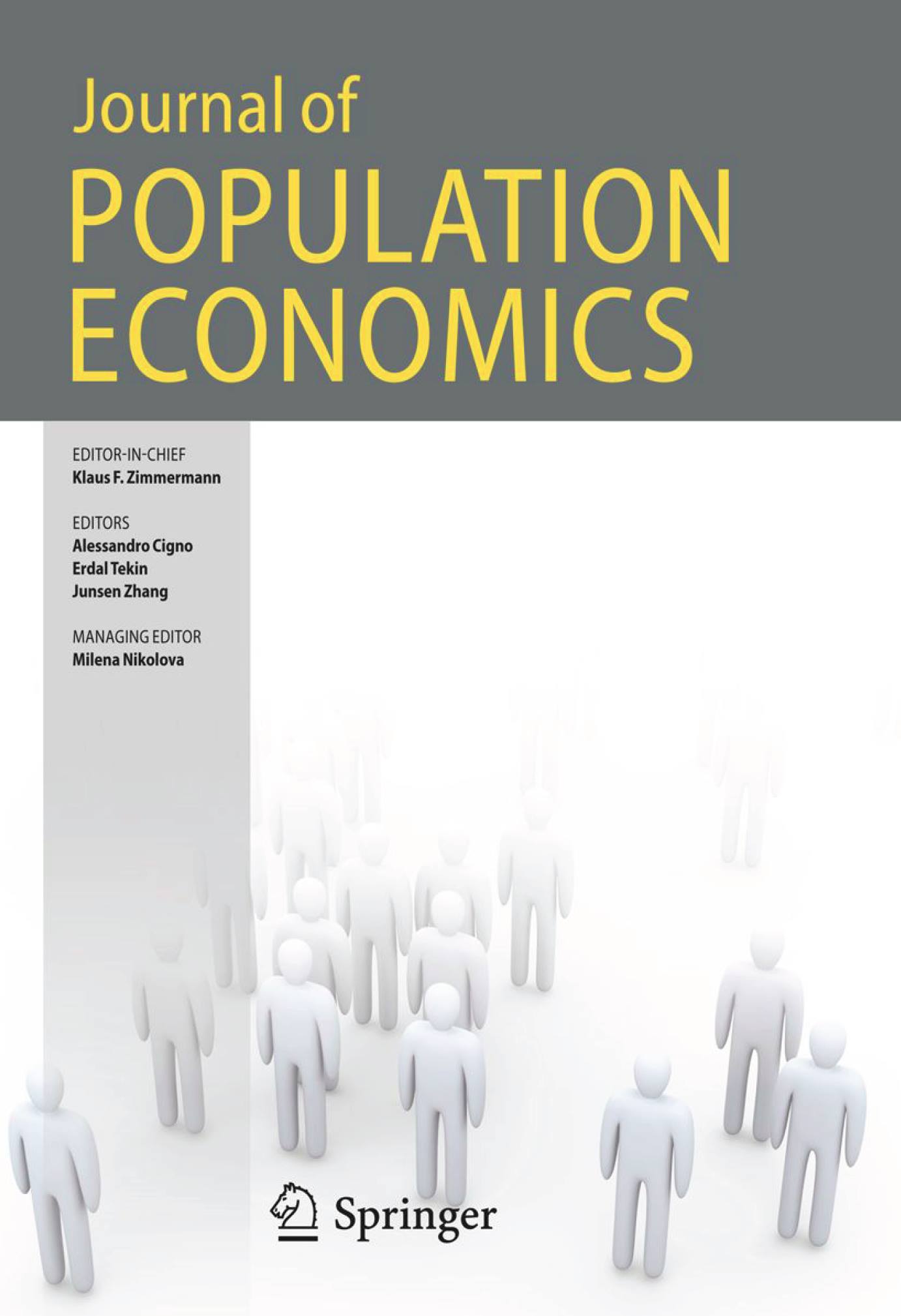 Sibling Correlations and Intergenerational Mobility across Immigrant GroupsJournal of Population Economics, 2025
Sibling Correlations and Intergenerational Mobility across Immigrant GroupsJournal of Population Economics, 2025We examine intergenerational income persistence and economic assimilation among immigrant groups, focusing on sibling correlations in permanent earnings. Using Dutch administrative data and a heterogeneous income transmission model, we analyze variations across genders, ethnic backgrounds, and immigrant generations. Our results show that, while sibling correlations in income are similar across groups, the underlying factors differ. Immigrants, especially those of Turkish and Moroccan descent, display distinct intergenerational patterns, indicating slower assimilation. Our results are invariant to adjustments for neighborhood characteristics such as ethnic segregation.
WP version:
@article{migrants, title = {Sibling Correlations and Intergenerational Mobility across Immigrant Groups}, author = {Colagrossi, M. and Deiana, C. and Geraci, A. and Giua, L. and Mazzarella, G.}, journal = {Journal of Population Economics}, year = {2025}, doi = {https://doi.org/10.1007/s00148-025-01086-3}, } -
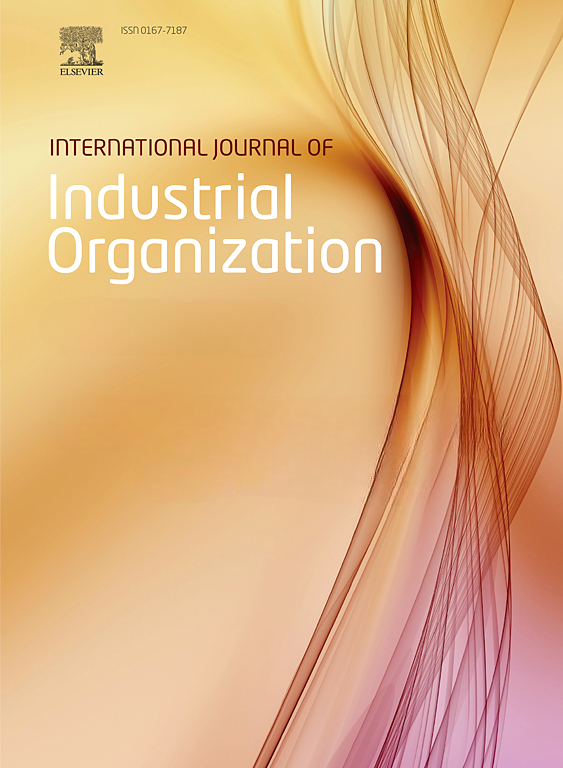 Evaluating the Impact of Price Caps - Evidence from the European Roam-Like-at-Home RegulationG. Canzian, G. Mazzarella, L. Ronchail, F. Verboven, and S. VerzilloInternational Journal of Industrial Organization, 2024
Evaluating the Impact of Price Caps - Evidence from the European Roam-Like-at-Home RegulationG. Canzian, G. Mazzarella, L. Ronchail, F. Verboven, and S. VerzilloInternational Journal of Industrial Organization, 2024The roam-like-at-home regulation (RLAH) eliminated all mobile roaming surcharges to European consumers travelling within Europe. We measure the causal impact of the regulation on European roaming traffic, using the Rest of the World as a control group. We find large and heterogeneous effects on retail and wholesale traffic volumes and revenues. To evaluate the welfare effects of the regulation, we develop a framework that includes consumer surplus, retail and wholesale profits. The gains in consumer surplus are large, and mainly stem from data services. The consumer gains are proportionately larger in small, open economies and in countries with previously high roaming prices. Finally, total welfare increases considerably, because the consumer surplus gains outweigh profit losses. As such, the removal of market power more than compensates for a distortion from a possible overconsumption at zero surcharges.
WP version:
@article{rlah, title = {Evaluating the Impact of Price Caps - Evidence from the European Roam-Like-at-Home Regulation}, journal = {International Journal of Industrial Organization}, pages = {103115}, year = {2024}, issn = {0167-7187}, doi = {https://doi.org/10.1016/j.ijindorg.2024.103115}, url = {https://www.sciencedirect.com/science/article/pii/S0167718724000705}, author = {Canzian, G. and Mazzarella, G. and Ronchail, L. and Verboven, F. and Verzillo, S.}, } -
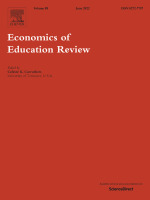 Study abroad programmes and student outcomes: Evidence from ErasmusS. Granato, E. Havari, G. Mazzarella, and Schnepf S.V.Economics of Education Review, 2024
Study abroad programmes and student outcomes: Evidence from ErasmusS. Granato, E. Havari, G. Mazzarella, and Schnepf S.V.Economics of Education Review, 2024Exploiting admission thresholds for participating in Erasmus, the most popular higher education study abroad programme in Europe, we implement a regression discontinuity design and show that student mobility does not delay graduation and, in addition, has a positive and significant impact on the final graduation marks of undergraduate students. We find that Erasmus mobility improves graduation results for undergraduate students enrolled in scientific and technical fields and for those who apply in the first year of their studies, especially when enrolled in more demanding degree courses. Investigating plausible mechanisms, we find that the positive impact on performance at graduation is stronger for students who visit foreign universities of relatively lower quality compared to their home university. Finally, we do not find statistically significant effects of Erasmus mobility on postgraduate educational choices and labour market outcomes one year after graduation.
WP version:
Study Abroad Programmes and Students’ Academic Performance: Evidence from Erasmus Applications, IZA Discussion Paper n. 14651
@article{erasmus, author = {Granato, S. and Havari, E. and Mazzarella, G. and S.V., Schnepf}, title = {Study abroad programmes and student outcomes: Evidence from Erasmus}, journal = {Economics of Education Review}, volume = {99}, year = {2024}, issn = {0272-7757}, doi = {https://doi.org/10.1016/j.econedurev.2024.102510}, url = {https://www.sciencedirect.com/science/article/pii/S0272775724000049}, keywords = {Study abroad, University, Erasmus, Regression discontinuity design}, } -
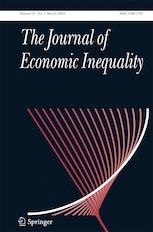 Intergenerational mobility in the Netherlands: models, outcomes and trendsM. Colagrossi, A. Geraci, and G. MazzarellaThe Journal of Economic Inequality, Jun 2023
Intergenerational mobility in the Netherlands: models, outcomes and trendsM. Colagrossi, A. Geraci, and G. MazzarellaThe Journal of Economic Inequality, Jun 2023We reconstruct the genealogical tree of all individuals ever appearing in Dutch municipalities records starting in 1995. Combining microdata from tax authorities with education records we compute a measure of permanent income as well as education. We estimate the degree of intergenerational persistence in education and income in the population and across time, showing that it is higher than what previous estimates would suggest, albeit it appears to be decreasing. Finally, exploiting information on the education of grandparents, we estimate a model of intergenerational mobility in which endowments are transmitted through a latent factor. Estimates suggest an even higher persistence.
@article{joei2023, author = {Colagrossi, M. and Geraci, A. and Mazzarella, G.}, title = {Intergenerational mobility in the Netherlands: models, outcomes and trends}, journal = {The Journal of Economic Inequality}, year = {2023}, month = jun, day = {21}, issn = {1573-8701}, doi = {10.1007/s10888-023-09569-7}, url = {https://doi.org/10.1007/s10888-023-09569-7}, gitrepo = {gianlucamazzarella/CBS_JoEI}, } -
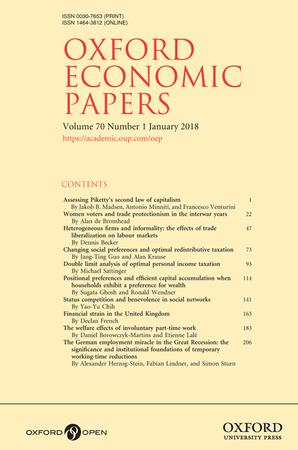 The unexpected influencer: Pope Francis and European perceptions of the recent refugee crisisC. Deiana, G. Mazzarella, E.C. Meroni, and L. Tiozzo PezzoliOxford Economic Papers, Jun 2023
The unexpected influencer: Pope Francis and European perceptions of the recent refugee crisisC. Deiana, G. Mazzarella, E.C. Meroni, and L. Tiozzo PezzoliOxford Economic Papers, Jun 2023This article analyses the impact of non-informative communication on Europeans’ perceptions of European Union (EU) action on the issue of migration. We exploit the fact that Pope Francis’s visit to Lesbos Island in 16 April 2016, overlaps with the days of the interviews for a Special Eurobarometer survey, such that some respondents were unintentionally exposed to the Pope’s speech while others were not. Comparing Catholics and non-Catholics before and after the Pope’s visit in a difference-indifferences setting, we show that the papal message persuaded exposed Catholic individuals that EU action on the issue of migration is insufficient. The effect is temporary and varies according to the demographic characteristics of the respondents and by the country’s share of asylum applicants in 2015. Moreover, media exposure of the Pope’s visit, measured by the Global Database of Events, Language, and Tone, was greater in Catholic countries, and this might explain the effect found.
@article{oep2023, author = {Deiana, C. and Mazzarella, G. and Meroni, E.C. and Tiozzo Pezzoli, L.}, doi = {10.1093/oep/gpac003}, issue = {1}, journal = {Oxford Economic Papers}, keywords = {JEL classifications: D83,R23,Z12}, pages = {75-95}, title = {The unexpected influencer: Pope Francis and European perceptions of the recent refugee crisis}, volume = {75}, url = {https://doi.org/10.1093/oep/gpac003}, year = {2023}, } -
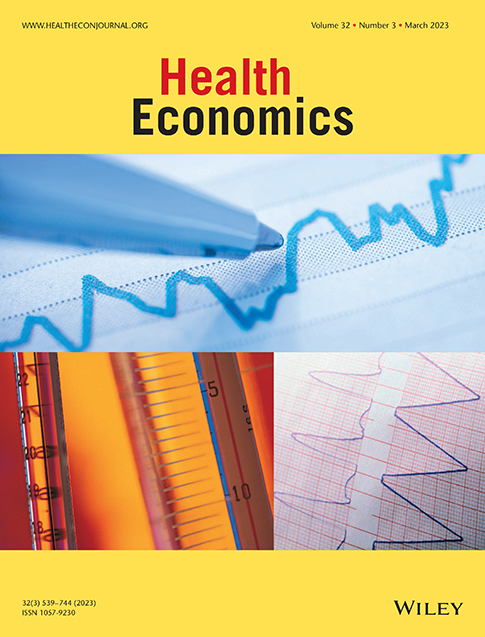 Perceived risk and vaccine hesitancy: Quasi-experimental evidence from ItalyHealth Economics, Jun 2022
Perceived risk and vaccine hesitancy: Quasi-experimental evidence from ItalyHealth Economics, Jun 2022In March 2021, Italian health authorities suspended the Vaxzevria vaccine (VA) for 4 days over reports of very rare blood disorders among recipients. We exploit the quasi-experimental setting arising from this break to study the drivers of vaccine hesitancy. Before the suspension, the VA vaccination trend followed the same pattern as Pfizer-Biontech (PB). After the suspension, VA and PB injections started to diverge, with VA daily decreasing by almost 60 doses per 100,000 inhabitants for the following 3 weeks. The resulting vaccination rate was 60 percent lower than the value that would have stemmed from the VA pre-suspension pattern. We show that the slowdown was weaker and less persistent in regions with higher COVID penetration and steadier and more pronounced in regions displaying greater attention to vaccine side effects as detected through Google searches. The public’s interest in vaccine adverse events negatively correlates with COVID cases and deaths across regions.
Media coverage:
@article{HE2022, author = {Deiana, C. and Geraci, A. and Mazzarella, G. and Sabatini, F.}, doi = {10.1002/hec.4506}, issn = {10991050}, journal = {Health Economics}, keywords = {COVID-19,Google searches,Vaxzevria vaccine,vaccine hesitancy}, title = {Perceived risk and vaccine hesitancy: Quasi-experimental evidence from Italy}, year = {2022}, } -
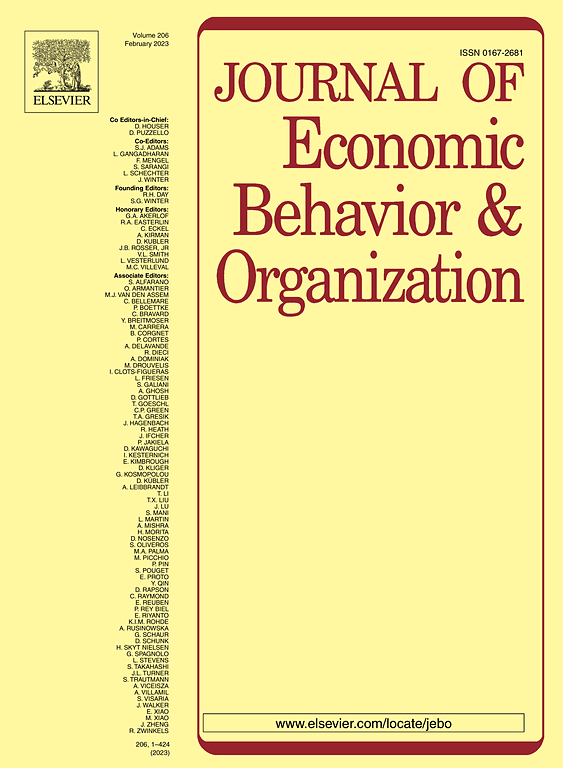 Can relief measures nudge compliance in a public health crisis? Evidence from a kinked fiscal policy ruleJournal of Economic Behavior & Organization, Oct 2022
Can relief measures nudge compliance in a public health crisis? Evidence from a kinked fiscal policy ruleJournal of Economic Behavior & Organization, Oct 2022We show that compensation measures aimed at improving the fairness of a crisis policy response can unintendedly nudge compliance with emergency rules. We combine information on the distribution of relief funds across Italian municipalities during the novel coronavirus pandemic with data tracking citizens’ movements through mobile devices and navigation systems. To assess the impact of transfers on compliance, we exploit a sharp kink schedule in the allocation of funds. The empirical analysis provides evidence that compliance increased with transfers, suggesting that the observance of emergency rules also depends on the fairness of the pandemic policy response.
WP version:
COVID-19 Relief programs and compliance in a public health crisis, IZA Discussion Paper n. 14064
Media coverage:
@article{JEBO2022, author = {Deiana, C. and Geraci, A. and Mazzarella, G. and Sabatini, F.}, doi = {10.1016/J.JEBO.2022.08.020}, issn = {0167-2681}, journal = {Journal of Economic Behavior \& Organization}, keywords = {COVID-19 policy response, Civic capital, Compliance, Regression kink design, Stay-at-home orders}, month = oct, pages = {407-428}, publisher = {North-Holland}, title = {Can relief measures nudge compliance in a public health crisis? Evidence from a kinked fiscal policy rule}, volume = {202}, year = {2022}, } -
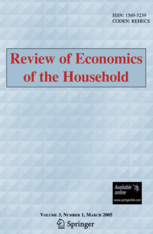 Employment protection legislation and household formation: evidence from ItalyG. Cerruti, M. Migliavacca, and G. MazzarellaReview of Economics of the Household, Oct 2022
Employment protection legislation and household formation: evidence from ItalyG. Cerruti, M. Migliavacca, and G. MazzarellaReview of Economics of the Household, Oct 2022While many studies have investigated the determinants of household formation and fertility in young adults, only a few have focused on the impact of employment protection legislation (EPL) on these outcomes. Moreover, to the best of our knowledge, no one has investigated how changes in EPL may alter the intentions of young individuals even before their realization. In this paper, we study the differential impact of the reduction in EPL associated with Italy’s 2015 Jobs Act on the household formation and fertility intentions of young Italians in various districts. We use data from a survey conducted on a sample of young people between the ages of 18-34 for the years 2012, 2015, 2016, and 2017. The identification strategy exploits local variation in the level of efficiency of the courts, measured in terms of the average duration of proceedings, to assess the existence of within-country and across-district heterogeneity in the reform’s impact. Indeed, firing costs used to be relatively greater in districts characterized by a longer duration of labor trials. The Jobs Act, by reducing firing costs and modifying the autonomy of judges, should have had a larger impact in districts with less efficient courts. According to our results, the reform seems to have indirectly leveled out the fertility and household formation intentions of young Italians living in districts with more and less efficient courts. Heterogeneities indicate that the results are mainly driven by older individuals and graduates who live in less disadvantaged areas. JEL classification C31 • M51 • J2 • J12 • J13 • J41
@article{reho2022, author = {Cerruti, G. and Migliavacca, M. and Mazzarella, G.}, doi = {10.1007/s11150-022-09626-6}, journal = {Review of Economics of the Household}, keywords = {Court efficiency,Difference-in-differences,Employment protection legislation,Fertility intentions,Household formation intentions}, title = {Employment protection legislation and household formation: evidence from Italy}, url = {https://doi.org/10.1007/s11150-022-09626-6}, year = {2022}, } -
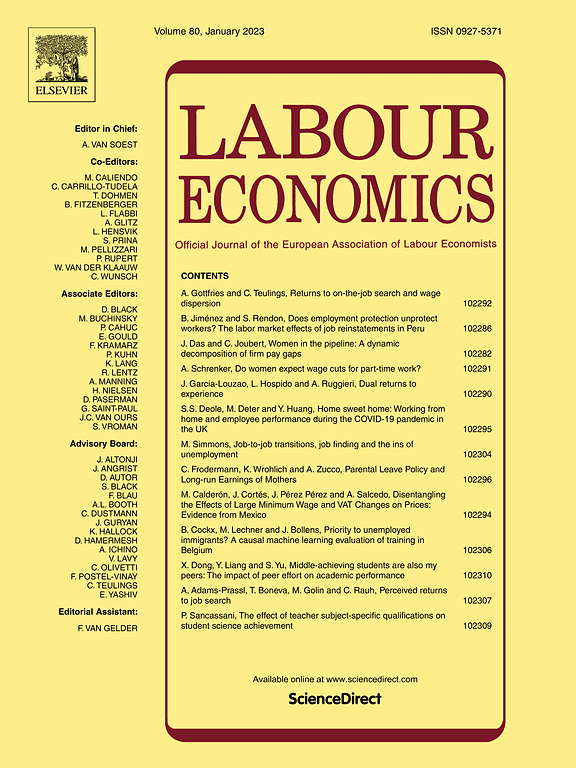 A babel of web-searches: Googling unemployment during the pandemicG. Caperna, M. Colagrossi, A. Geraci, and G. MazzarellaLabour Economics, Oct 2022
A babel of web-searches: Googling unemployment during the pandemicG. Caperna, M. Colagrossi, A. Geraci, and G. MazzarellaLabour Economics, Oct 2022Researchers are increasingly exploiting web-searches to study phenomena for which timely and high-frequency data are not readily available. We propose a data-driven procedure which, exploiting machine learning techniques, solves the issue of identifying the list of queries linked to the phenomenon of interest, even in a cross-country setting. Queries are then aggregated in an indicator which can be used for causal inference. We apply this procedure to construct a search-based unemployment index and study the effect of lock-downs during the first wave of the covid-19 pandemic. In a Difference-in-Differences analysis, we show that the indicator rose significantly and persistently in the aftermath of lock-downs. This is not the case when using unprocessed (raw) web search data, which might return a partial figure of the labour market dynamics following lock-downs.
@article{babel2022, author = {Caperna, G. and Colagrossi, M. and Geraci, A. and Mazzarella, G.}, doi = {10.1016/j.labeco.2021.102097}, issn = {09275371}, journal = {Labour Economics}, keywords = {Covid-19,Difference-in-Differences,Google trends,Nowcast,Random forest,Unemployment}, title = {A babel of web-searches: Googling unemployment during the pandemic}, volume = {74}, year = {2022}, } -
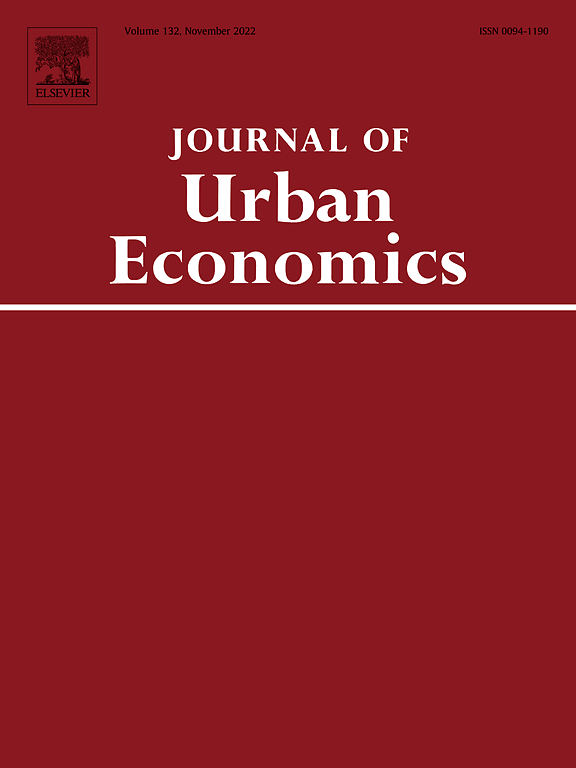 Geographical proximity to refugee reception centres and votingJournal of Urban Economics, Oct 2020
Geographical proximity to refugee reception centres and votingJournal of Urban Economics, Oct 2020A number of studies examine the effect of the presence of migrants or refugees on voting behaviour in the same location, overlooking potential interactions between geographical areas. Exploiting unique data on refugee reception centre locations, we provide novel empirical evidence on the geographical spillover effect of refugee premises on voting outcomes in neighbouring municipalities. Our analysis of the 2016 referendum and the 2013 and 2018 general elections demonstrates that proximity to refugee reception centres increases voter turnout and the share of votes for populist parties in Italy, while reducing support for the centre-left. Importantly, the effect varies by municipality population size, per capita taxable income level, former political orientation, and access to broadband internet. Consistent with the hypothesis that opposition parties might have exploited anti-immigration sentiments to influence both referendum and general election ballots, we find that geographical proximity to refugee centres partly contributes to the recent success of populist parties in Italy.
WP version:
What are you voting for? Proximity to refugee reception centres and voting in the 2016 Italian constitutional referendum., IZA Discussion Paper n. 11060
Price:
- Winner of the 2018 Ezio Tarantelli award for the best paper at the Italian Association of Labour Economics (AIEL), Motivation
@article{jue2020, author = {Bratti, M. and Deiana, C. and Havari, E. and Mazzarella, G. and Meroni, E.C.}, doi = {10.1016/j.jue.2020.103290}, issn = {00941190}, journal = {Journal of Urban Economics}, keywords = {Geographical spillovers,Italy,Proximity,Refugees,Voting}, title = {Geographical proximity to refugee reception centres and voting}, volume = {120}, year = {2020}, } -
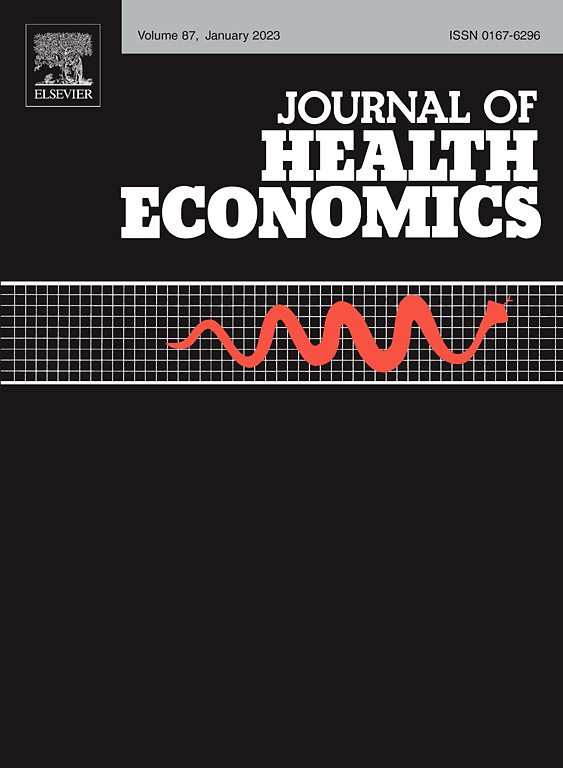 Does postponing minimum retirement age improve healthy behaviors before retirement? Evidence from middle-aged Italian workersM. Bertoni, G. Brunello, and G. MazzarellaJournal of Health Economics, Oct 2018
Does postponing minimum retirement age improve healthy behaviors before retirement? Evidence from middle-aged Italian workersM. Bertoni, G. Brunello, and G. MazzarellaJournal of Health Economics, Oct 2018By increasing the residual working horizon of employed individuals, pension reforms that rise minimum retirement age can affect individual investment in health-promoting behaviors before retirement. Using the expected increase in minimum retirement age induced by a 2004 Italian pension reform and a difference-in-differences research design, we show that middle-aged Italian males affected by the reform reacted to the longer working horizon by increasing regular exercise, with positive consequences for obesity and self-reported satisfaction with health.
WP version:
@article{jhe2018, author = {Bertoni, M. and Brunello, G. and Mazzarella, G.}, doi = {10.1016/j.jhealeco.2018.02.011}, issn = {18791646}, journal = {Journal of Health Economics}, keywords = {Healthy behaviors,Pension reforms,Retirement,Working horizon}, title = {Does postponing minimum retirement age improve healthy behaviors before retirement? Evidence from middle-aged Italian workers}, volume = {58}, year = {2018}, }








